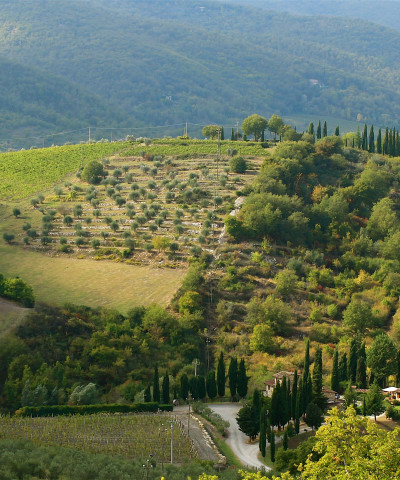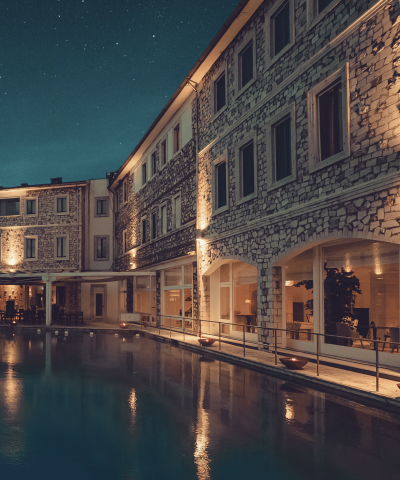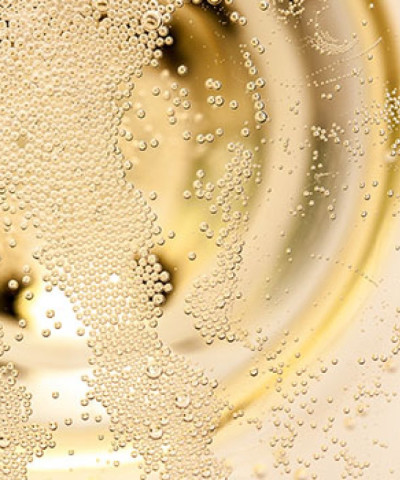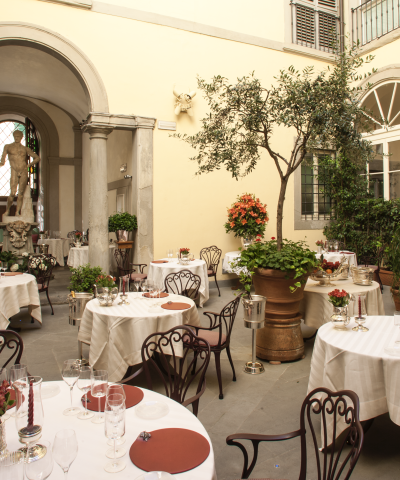The most beautiful villages to see in Chianti
From Montefioralle to Castellina, here are the villages not to be missed on your Chianti tour
Between Florence and Siena, framed by romantic hills and fairytale castles, we find Chianti. A succession of beautiful landscapes made up of vineyards, woods and suggestive villages all to be discovered. But which ones should you absolutely visit? We'll tell you!
To discover the best restaurants in Chianti, click here!
GREVE IN CHIANTI
Halfway between Florence and Siena, Greve in Chianti is the largest town in the Chianti region and still retains the liveliness that has characterised it since the Middle Ages, when it was the most important trading post for the nearby Castle of Montefioralle, a majestic castle that towers over the charming walled village just above Greve. Piazza Matteotti is the main landmark, and around the square we find some of the best restaurants where you can taste typical local cuisine. Read more here about what to see and where to eat in Greve in Chianti.
 Piazza Matteotti - Greve in Chianti
Piazza Matteotti - Greve in ChiantiMONTEFIORALLE
The village of Montefioralle is nestled in the Chianti hills just above Greve in Chianti and it seems that its name derives from the fig trees that grew luxuriantly in the fields around the castle. The village develops right around the castle and is a concentration of narrow alleys that all lead back to the feudal keep. Every year, the Festa della Frittella takes place on the first Sunday after St Joseph's Day to mark the Feast of St Joseph.
 montefioralle
montefioralle PANZANO IN CHIANTI
The ideal stop to breathe in the air of the tranquillity of the hills and visit a medieval village where time seems to stand still. Considered the true heart of Chianti, Panzano is a village where less than 1,000 people live but where everyone passes through to explore the area and to eat 'dal Cecchini', the famous steak poet (here is the video in which the poet recites the Canto dei Golosi in front of his grill). Here for more information on what to do and where to eat in Panzano in Chianti.
 Chiesa di Santa Maria a Panzano
Chiesa di Santa Maria a PanzanoCASTELLINA IN CHIANTI
A pretty village in the Sienese Chianti area, set in the hills straddling the Val d'Elsa, Val di Pesa and the Arbia river valley. The heart of the village is the ancient Rocca designed in the second half of the 15th century by Giuliano da Sangallo. At the crossroads leading to the Rocca is the church of San Salvatore in neo-Romanesque style, rebuilt after the destruction of the last World War. It is impossible to pass through Castellina and not stop for a tasting in the numerous wine shops in the village and appreciate the art of pork butchery with cured meats and flavours to be discovered. Here for more information on what to do and where to eat in Castellina in Chianti.
 Castellina in Chianti
Castellina in Chianti GAIOLE IN CHIANTI
Another key stop on the Chianti Classico tour is Gaiole in Chianti. Its origins date back to the Middle Ages, and a statue of a black rooster, symbol of Chianti, can be seen in its square. The hamlet, located along the course of the Massellone stream, developed from the 13th century as a 'market town', and the Strada dei Castelli also originated here: among which we point out the Castle of Cacchiano, the Castle of Brolio, Meleto, Vertine, San Polo in Rosso and the Castle of Ama, the latter famous - in addition to its wine production - for the numerous works of contemporary art housed inside. Also indissolubly linked to Gaiole is L'Eroica, an event evocative of cycling in days gone by. Here for more information on what to see and where to eat in Gaiole in Chianti.
 gaiole in chianti
gaiole in chiantiRADDA IN CHIANTI
A small village located in an area on the border between the Arbia and Pesa valleys. Radda in Chianti is protected by its defensive walls and is considered the village of the vineyards. In fact, the view from the hillock on which Radda was built in the Middle Ages overlooks an expanse of beautiful vineyards. The centre of the village, dominated at the top by what remains of the original castle, is Piazza Ferrucci. Here for more information on what to do and where to eat in Radda in Chianti.
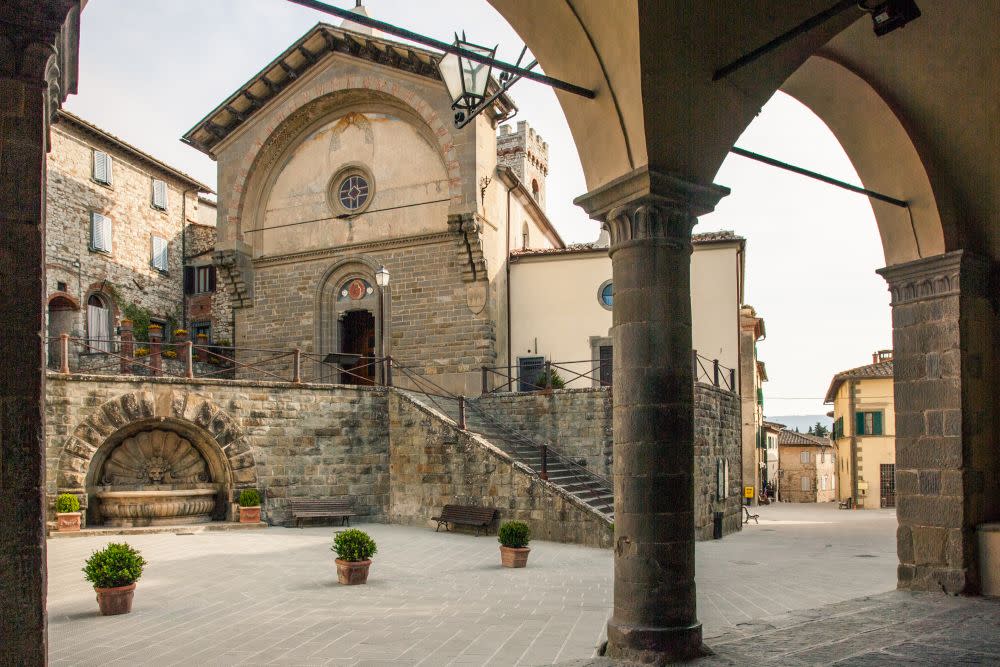 Piazza Ferrucci with the Propositura of San Niccolò
Piazza Ferrucci with the Propositura of San NiccolòCASTELNUOVO BERARDENGA
Built in 1366 as a 'new castle' by the city of Siena due to its strategic position on the border of the Sienese territory, Castelnuovo Berardenga remained under the control of Siena until 1555, when the city was defeated by the Grand Duke of the Medici family. It is characterised by a tranquil atmosphere and is also known as the 'City of Wine', a title shared by many of the main Chianti localities that still conserve the original techniques of wine production and conservation. The name Berardenga derives from Count Berardo, of the Frankish people, who lived in what would later become the site of the town in the second half of the 20th century.
 Castelnuovo Berardenga
Castelnuovo Berardenga VOLPAIA
The Castle of Volpaia, in the territory of Radda in Chianti, is a fortified village with a strong medieval imprint, whose historicity has survived to the present day. One goes to Volpaia to immerse oneself in the cosy, typically Tuscan atmosphere where the narrow streets and stone houses display a tranquillity far removed from the hustle and bustle of the cities.
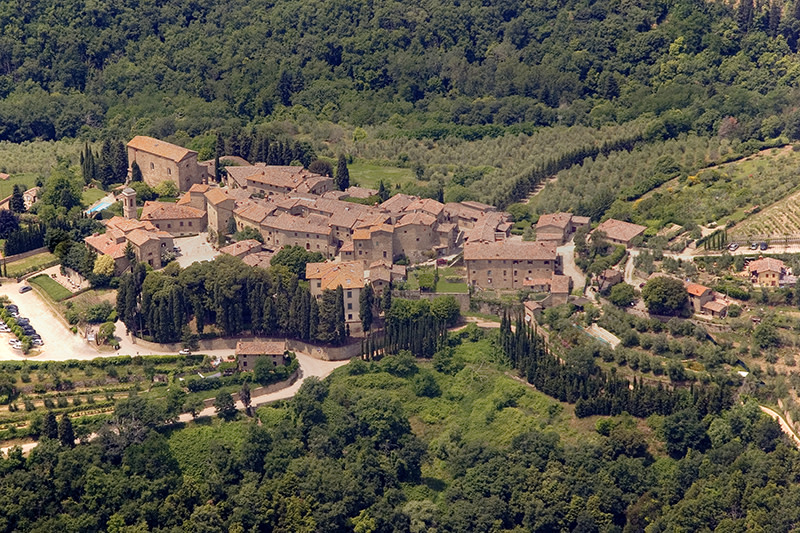 The village of Castello di Volpaia
The village of Castello di VolpaiaSAN GUSMÈ
A small jewel that retains, in its streets, all the authentic charm of its history. Its name recalls Saint Cosmas, whose church of the same name was founded in the year 867 and to whom the ancient parish church of Campi was dedicated. It was only in 1370 that the fortification of the village, until then a village of modest dimensions that developed around the Berardenga abbey, took place. The walls still exist in part today and the village is one of the Italian examples of a fortified village.
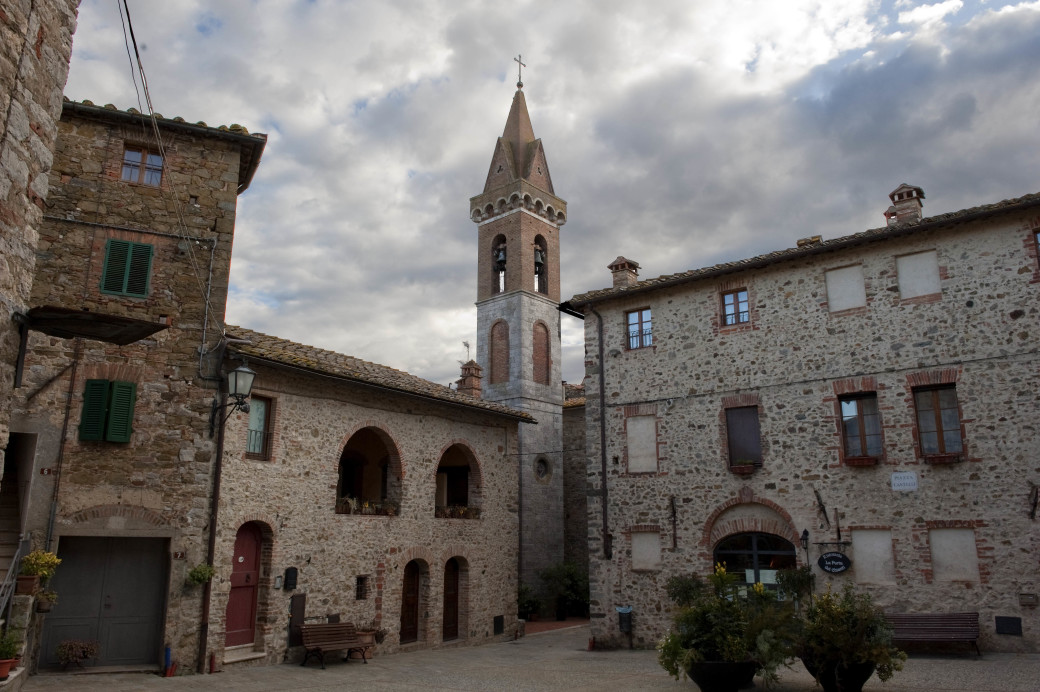 San Gusmè
San Gusmè 








